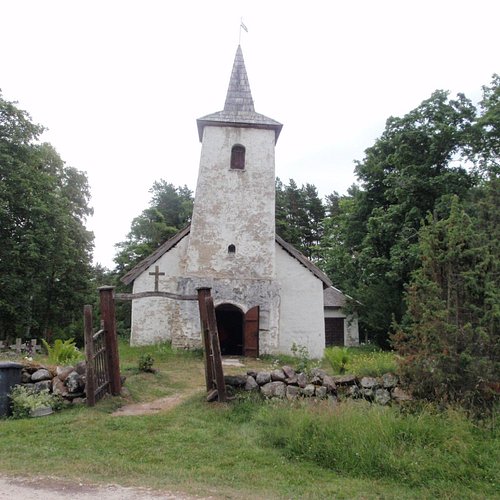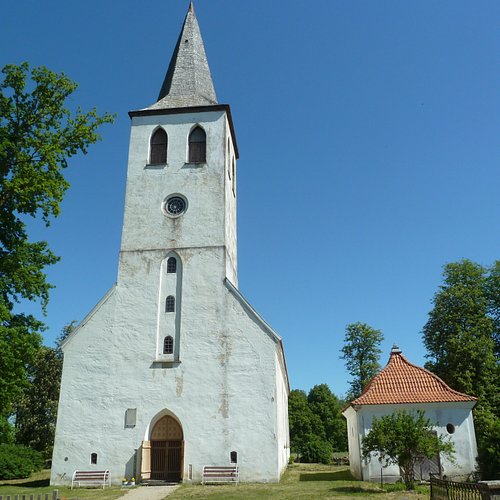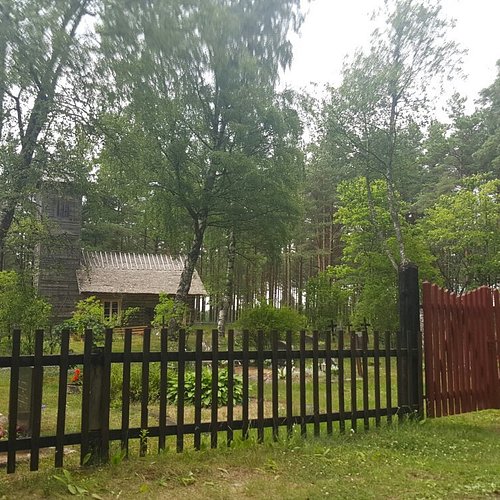Things to do in Hiiu County, Hiiu County: The Best Churches & Cathedrals
Discover the best top things to do in Hiiu County, Estonia including Kardla Kirik, Kassari Chapel, Kaina Church Ruins, Emmaste Church, Puhalepa Church, Kuriste Church, Manspae Chapel.
Restaurants in Hiiu County
1. Kardla Kirik
Overall Ratings
5.0 based on 1 reviews
The church of Kardla was dedicated to John the Baptist and was constructed in 1863. It is the third church in Kardla.The barons of Emmaste, Suuremoisa and Putkaste were the initiators of the idea to build the church and gave the baron of Kardla 2000 roubles for that purpose. The workers of the cloth factory made voluntary donations and a part of the money for the construction was taken from the workers wages.It is an architecturally harmonic, typical hall church with an “open” bell tower crowning the western facade (unique in Estonia).The architecture of the stylish and beautiful church in Kardla is simple and ascetic. This architectural monument is one of the most distinguished working-class churches.
2. Kassari Chapel
Overall Ratings
4.5 based on 10 reviews
Kassari chapel is a building with romantic appearance that is the only functioning thatched-roof stone church in Estonia. Reputedly it dates back to 18th century because on the inner wall of the chapel there is a year 1801 that is associated with big repair. In the graveyard there are the graves of many famous people - the ancestors of the poets M. Under and D. Vaarandi; the actor Olev Eskola; familiar from V.Panso book "The Funny Person" Lepa Anna. Familiar from art, literature and folk tales the name of Villem Tamm, whom J. Koler used as a model for Christ when painting his work "Come to me" in Kaarli church.
3. Kaina Church Ruins
Overall Ratings
4.0 based on 10 reviews
The ruins are located in the heart of the locality Kaina. The church was built at the turn of the 15th - 16th century. The Gothic church in Kaina seated 600 persons and was the biggest church on Hiiumaa. The church was destroyed in 1941. Several tombstones as well as the sun cross above the entrance are protected as art monuments. A fire in the church destroyed many art treasures: the altar of the Virgin Mary, Saint Nicholas and Saint Antonio, the organ built by the father of the Estonian composer Rudolf Tobias etc. The church also served as the parish centre for many centuries. The ruins have now been conserved, the restoration of the church is planned. The trees that surround the church form a nice park, as the locals call it.
4. Emmaste Church
Overall Ratings
3.0 based on 1 reviews
Construction of this stone church started in 1866, after the Soru wooden church near the Emmaste Manor became usable. The land for the new church was presented to the congregation by the lady of the manor, Countess Brevern de la Gardie. The nave resembles a church hall, despite the two rows of thin support columns. The choir room is separated from the nave by a high, but relatively narrow, triumphal arch. The Emmaste Church has a unique altar painting entitled The Resurrection. The author of the painting, as confirmed by the signature at the bottom of the canvas, is Tonis Grenzstein, the distinguished representative of the Dusseldorf School in Estonia. The altar painting was completed in 1900.
5. Puhalepa Church
Overall Ratings
3.0 based on 3 reviews
The Puhalepa Church is Hiiumaa’s oldest stone church. In 1255, the German Order started the construction of a stone fortress-church. Initially lacking a steeple, the arched stone church was completed in the 14th century; construction of the steeple started in 1770. After it renovation in the 19th century, Crosses of Malta were painted on the walls that are primarily associated with the membership of the Ungern-Sternberg family members in this Order. Interesting fact: – One of the inauguration crosses has survived on the wall of the choir room. – An unusual stone pulpit was given to the Puhalepa Church by the Hiiesaare manor lords, the Gentschiens in 1636. – The burial chapel of the von Stenbock family is in the churchyard.
6. Kuriste Church
The Estonian Orthodox Hiiumaa Church of the Birth of the Mother of our Lord in the Village of Kuriste was completed in 1873. The historicist-style stone church was established on the island in the course of the conversion movement. The stones were brought from Riga. Icons and liturgical textiles from the end of the 19th and beginning of the 20th centuries are on display. The former priest's house is located next to the stone church. The church is the only orthodox church to have survived in Hiiumaa, where services also take place.
7. Manspae Chapel
The first chapel was erected in thanks to God by Danish seamen, who had escaped from a shipwreck on the Manspae coast. The chapel was built from the pieces of the shipwreck and is said to have had room for only 10 people. In the first half of the 19th century, one of the first “reading schools” in the area operated in the chapel. The present Manspae Chapel – the third at this location – was built by the Emmaste Manor lord, Baron Hoiningen-Huene based on a plan designed in 1908. The builder was master builder Toomas Koolmeister. In 2006, the chapel received a new coat of paint, which is exactly the same shade of yellow as when the chapel was built a century ago.




